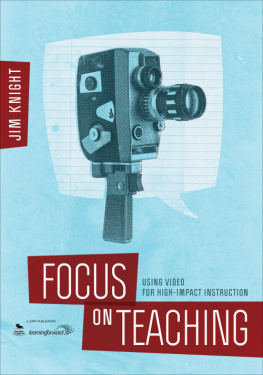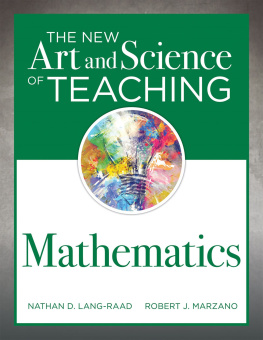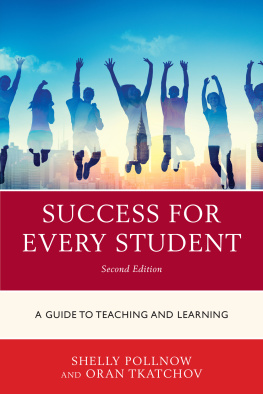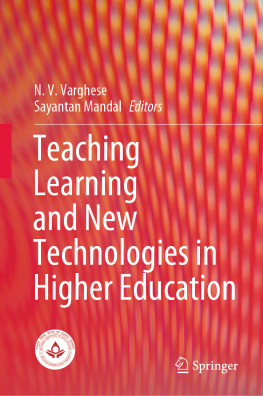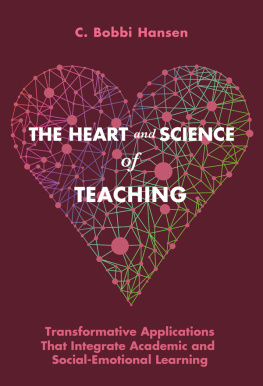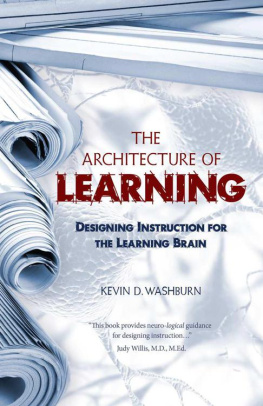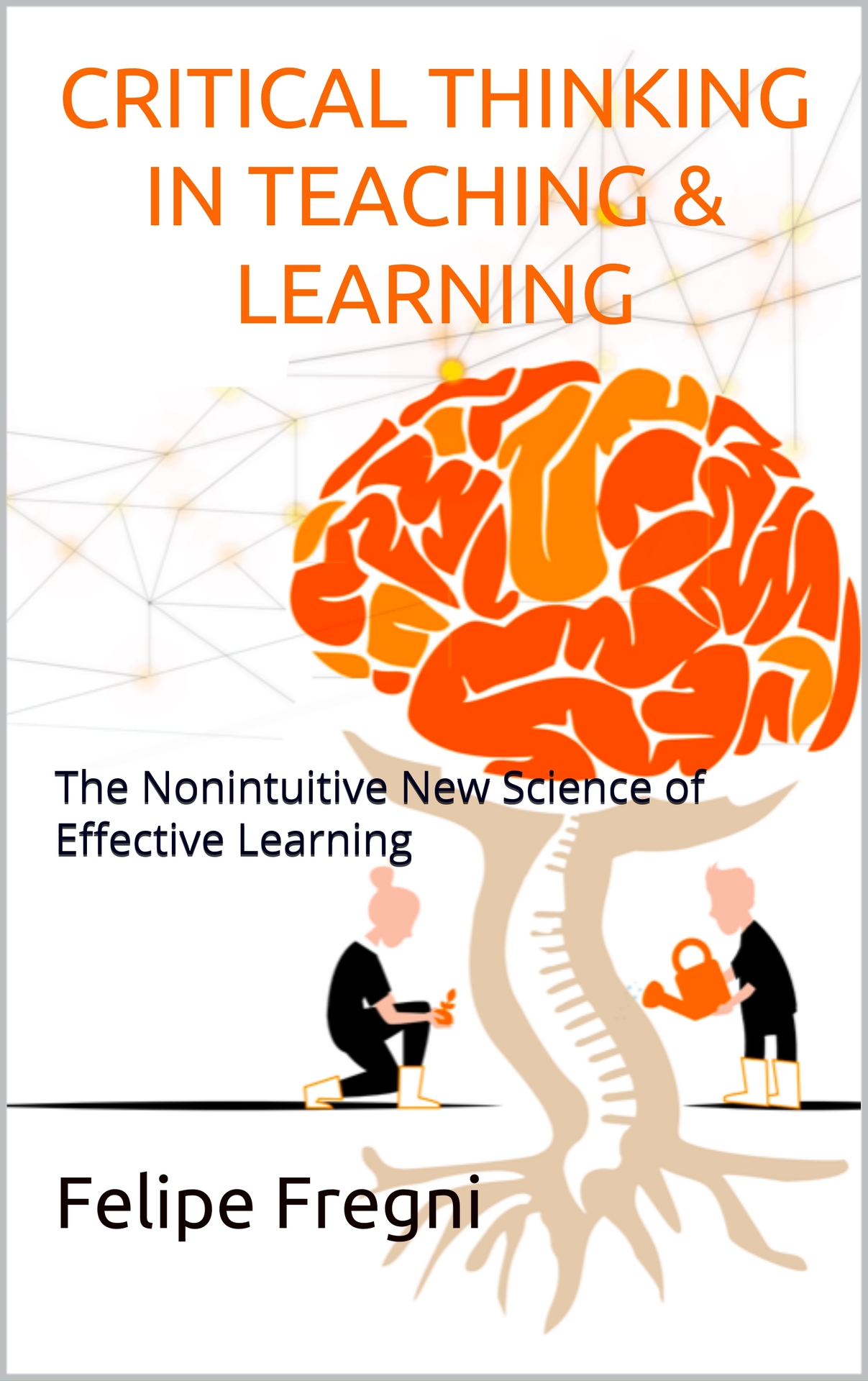CRITICAL THINKING IN
TEACHING AND LEARNING
The Nonintuitive New Science of Effective Learning
FELIPE FREGNI
CRITICAL THINKING IN
TEACHING AND LEARNING
The Nonintuitive New Science of Effective Learning
Book Author:
Felipe Fregni, M.D., Ph.D., M.M.Sc., M.P.H., M.Ed.
Associate Professor of Physical Medicine and
Rehabilitation, Harvard Medical School
Associate Professor of Epidemiology, Harvard T.H. Chan School of Public Health
Director, Spaulding Neuromodulation Center,
Spaulding Rehabilitation Hospital
Book Contributors (creation and development of figures, tables and cover page):
Kevin Pacheco, M.D.
Alejandra Cardenas, M.D.
Ines Messia, M.D.
Paulo Teixeira, P.T. (chapter 7 only)
Copyright 2019 Felipe Fregni
All rights reserved.
Published by Lumini LLC, Massachusetts
DEDICATION
Education is the most powerful weapon which you can use to change the world
Nelson Mandela
This book is dedicated to the teachers that we all have inside us; from the mothers who have the noble mission to shape the minds of our future generation to the professional who finds extra time and passion for passing along the knowledge to their colleagues.
To my wife who has been the superb teacher to our son and to my father who has inspired me to learn the art of teaching.
CONTENTS
Introduction: There Is No Magic Pill for Learning
Human beings are wired for learning. Our species would not have been so successful if not for our learning skills. Our civilization progress is a result of the rapid accumulation of knowledge, especially in the past century. On the other hand, schools (or educational programs) do not seem to be taking advantage of our innate ability for learning. Many students see courses as only a step away to get their diploma and start working. Also, students are usually bored with educational programs. It is not surprising that students' reaction with a traditional educational program. Indeed, courses that are designed for unloading a significant amount of content on students using endless one-way format lectures are highly ineffective. In these courses, students do not usually do anything else besides cramming at last minute before the final exam.
Why does a good number of teachers keep doing educational programs in this traditional way? Because we are used to that. Because since our first years in the school system, we learned that a good student needs to get good grades in the exams. Because it is a relatively easy system in which the teacher has much more control of the classroom. Because although neuroscience has advanced in the past 30 years, this knowledge has not passed to the teachers, at least not yet for the majority of them.
The goal of this book is, therefore, to look at teaching methodology in the light of the neural mechanisms associated with learning. My almost 20 years of experience in researching the mechanisms of neural learning in patients with brain lesions have helped me to see learning in the classroom a bit different. Besides, I was fortunate to be involved early on designing an online program that is offered by Harvard on clinical research methodology. This program has expanded and currently is offered to about 450 students in more than 50 countries. This program has also helped me to put in practice many of the learning and teaching methodologies that I have researched in these past 20 years.
In this book, I discuss the main mechanisms of learning, starting at neuronal level regarding how neurons change when we learn and then reviewing and discussing some critical neural systems that need to be taken into account (and indeed used by teachers) during learning such as our attentional system, long-term memory, motivation, stress, and emotional system. In the next part of the book, I apply the concepts from chapters 1 to 5 into teaching methodologies, discussing teaching methods such as the student-centered vs. teacher-centered methods. I also discuss online learning, discussing the pros and cons of this strategy, and finally, explain how to enhance critical thinking skills in the classroom. The last chapter is about grading and assessments, discussing a new way of looking into it.
Although you can choose to read the chapters in a random order, I do recommend to follow the book order, especially for the first five chapters. I also welcome feedback on the book and questions and comments, please do send to felipe.fregni@medicaltli.org.
Felipe Fregni
Boston, June 2019
Chapter 1 - The Neural Basis of Learning
Neuroscience has advanced significantly in the past 20-30 years with the use of better tools to understand neural function. This progress has allowed us to gain important insights into the neural mechanisms of learning that can be applied to education. However, this publication is not a book on neuroscienceit is a book on how to teach more effectively by understanding how we learn.
Should an educator care about the neural mechanisms of learning? Absolutely. For instance, a physician who treats blood pressure needs to understand the mechanisms of an anti-hypertensive drug to select the best option for his patients, based on individual characteristics and clinical expertise. Merely memorizing, for instance, that drug A can treat blood pressure in younger patients and drug B in patients with diabetes would not be efficient, because such information would be difficult to memorize and because this habit would limit ones critical thinking with regard to the use of blood pressure-lowering agents.
Intuition and self-reflection are significant components of education, meaning that we learn how to teach effectively naturally. It is true that a teacher, if he is a reasonable observer, will notice that a long 50-min lecture with no breaks and a large amount of content will be ineffective. Next time, this teacher might test alternative methods, such as shorter mini-lectures. However, this process is inefficient, because many years of observation will likely be necessary to develop the ideal best teaching practices. Most teachers will not have the time or the scientific mind for such a trial-and-error strategy. Further, on understanding the neural basis of learning, we can choose strategies, based on the theory of learningnot on the intuition that comes from natural observation and thinkingwhich might save years that are spent on a trial-and-error process. One final advantage of understanding how we learn is that it might be easier to convince administrators and educational policymakers to replace educational methods with novel, better strategies.
Another important issue in education is that most educational theories and methods were developed before the birth of the neural basis of learning or in its infancy. Thus, the traditional classroom style, wherein a teacher spoke for one hour (or more) in front of students, became the principal method of education. Although this approach might be an effective method for training teachers and providing education on a large scale, this design for learners is far from being ideal as this is not how human brains are wired to learn.
As I will discuss several times in this book, learning comes from within . Learning cannot be forced. Students often learn how to pass a test or how to (unfortunately) cheat on a test to pass. They might spend hours learning the strategy of an exam and how to maximize their chances of passing it. Therefore, to break this current paradigm of teaching and learning, it is important to understand the neural basis of learning to truly develop educational programs that result in long-lasting and meaningful learning.


